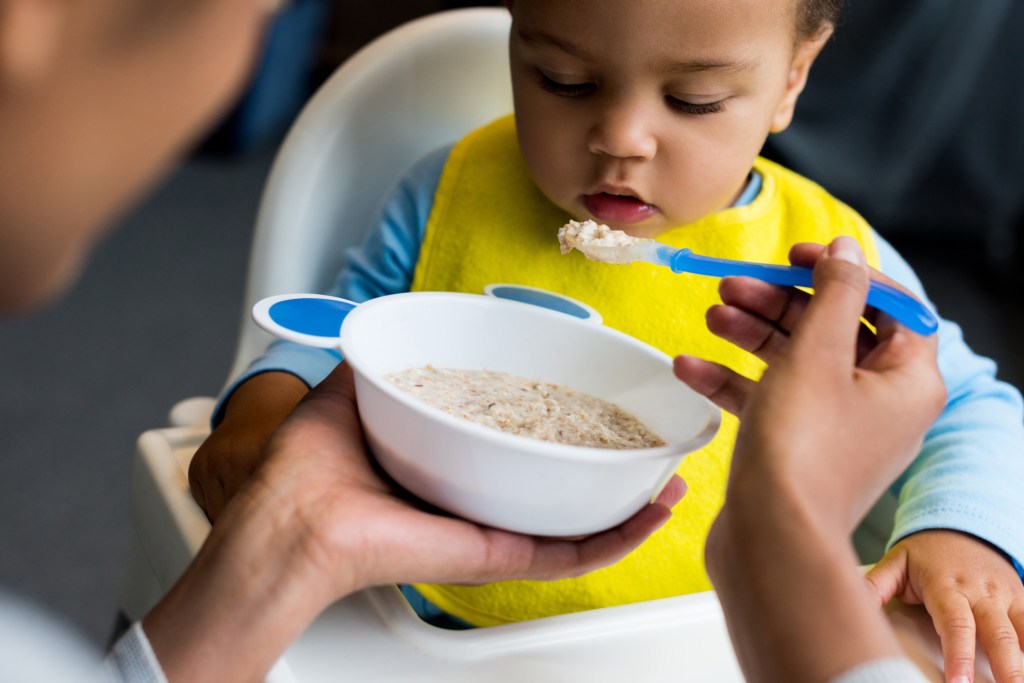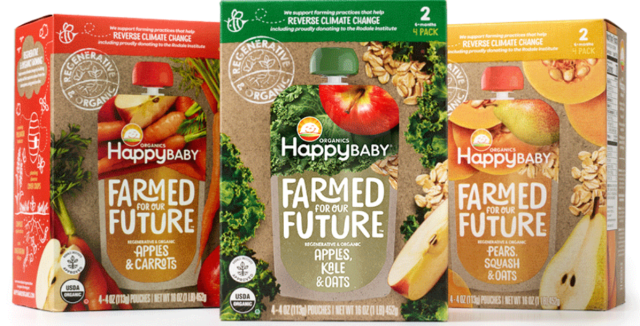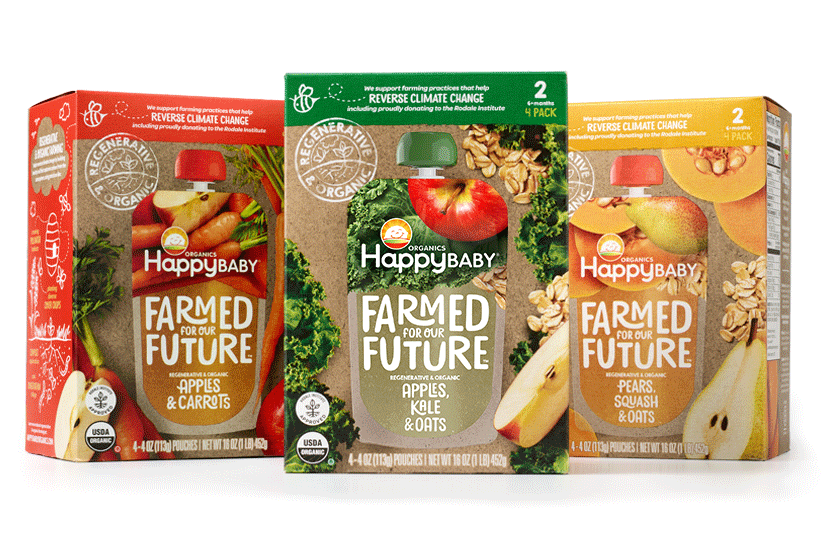Gorgeous photos, easy scrolling — Instagram was made for busy parents. Make it your go-to when you’re scrambling for dinner ideas. You’ll find popular bloggers there, but also diehard foodies who exclusively “gram” and have thousands of fans. We rounded up some of our favorite foodie moms and dads. From first foods to full courses, freezer meals to farm-fresh, these parents are worth following.
1. Clean Eats Clean Treats
If you know what the “whole30” plan is, this mom is a must-follow. You can expect to find easy, totally doable dishes, many of which are “whole30” approved. Instructions and recipes are posted too, making it a one-click stop. She also posts toddler-friendly meals, healthy grocery finds, and bits and pieces of mom life that you’ll totally relate to. Get all her tips at Clean Eats Clean Treats.
photo: Clean Eats Clean Treats
2. Tracy Shutterbean
Her tagline is “food, photography, and pretty things”, which aptly sums up this gorgeous account. Food here ranges from simple to sophisticated, but attainable, not pretentious: think mushroom polenta bites, maple bourbon pumpkin butter, and toast with coconut butter and banana. Be on the lookout for a few school lunches here and there with charming notes written on masking tape. For a personal touch, she throws in cute kid pics and pretty shots of everyday finds. Drool over other pics at Tracy Shutterbean.
photo: Tracy Shutterbean
3. The Natural Nurturer
Plant-based dieters and hungry folks looking for inspiration, look no further. Every picture packs vibrant colors, from whole-wheat orzo and veggie salads to pineapple broccoli stir-fry. This preschool teacher with a preschooler of her own also shares snaps of her daughter’s packed lunches, farmer’s market hauls, and her personal journey of weight loss and healthy living. Get inspired at The Natural Nurturer.
photo: The Natural Nurturer
4. Nom Nom Paleo
Do this paleo blogger(and yourself!) a favor and follow her. She’s a popular blogger and cookbook author, but her Instagram feed is an untapped source of behind-the-scenes photos, quick pro tips, and the meals she eats while out and about. She makes paleo eating look doable, with easy recipes like crispy fried eggs cooked in ghee and sprinkled with furikake. Bonus: Look for her shout-outs to other bloggers and grammers — it means more foodie inspiration for you. Find out more at Nom Nom Paleo.
photo: Nom Nom Paleo
5. Real Food by Dad
A foodie dad with a penchant for comfort food is always a worthy follow. Just imagine; meatball-stuffed baked potatoes, “trashy” huevos rancheros, mini beef pot pies, and margarita popsicles. Periodic pics of adorable baby chub can’t hurt, either. P.S.: Set some money aside, because you’ll definitely want to buy a waffle maker after seeing what he cooks in his! Work up an appetite at Real Food by Dad.
photo: Real Food by Dad
6. Wildely Raw
Next time you feel like a slacker, turn to this mom of three-under-three for inspiration. Her positive attitude is a breath of fresh air and her many smoothie and “nice” cream (“ice cream” made from frozen bananas) recipes will help you and your kiddos eat healthy without missing dessert. Expect to find a few dairy-free, sugar-free, and gluten-free recipes, too, like her recent pumpkin bread or vegan banana chocolate chip muffins. Get the goods at Widely Raw.
photo: Wildely Raw
7. Easy Lunchboxes
If you’ve ever pinned a bento lunch on Pinterest, we’ll bet it’s made in an Easy Lunchbox. The CEO is both mom and social media maven; be sure to follow this account to check out her oft reposted follower-packed lunch ideas ranging from kiddo bentos to work lunches. She’ll even show you how to pack up leftovers. Since she reposts so frequently, you’re bound to stumble upon even more Instagrammers to follow. Get a fresh start on lunch at Easy Lunchboxes.
photo: Easy Lunchboxes
8. Coco Cake Land
Sometimes — okay, often — a picture of to-die-for cuteness just makes your whole day. This blogger makes the most adorable desserts, hands down. The smiles on her expertly piped cakes in the shapes of cows, cats, frogs, and pineapples are contagious. Instagram purists may not dig clicking links to external sites, but you won’t be able to resist the urge to check out her tutorials. Indulge in your sweet tooth at Coco Cake Land.
photo: Coco Cakeland
9. Kevin Blankenship
This dad’s pancake game puts our best sketches to shame. And quite honestly, we can’t be offended because he’s just that good. You name it, he’s pancaked it: Rainbow Dash, Pikachu, Wolverine, and yes, Elsa. Quite a few creations are the result of fan requests, so start getting friendly and he might just whip up your, er, your kid’s, favorite character. Flip over these pancakes at Kevin Blankenship.
photo: Kevin Blankenship
10. Chaaaboou
Totally under the radar and almost totally in Japanese, this unassuming account is captivating. Maybe it’s the effortless beauty of the first-stage purees she posts, in teardrop bowls and English text labels (rice porridge, sweet potato, and cabbage are recent faves). Or maybe it’s the pictures of her chubby-cheeked baby adorned with the finest of emoticons. Either way, if you’re a minimalist with a baby just starting out on solids, you’ll find this fellow mom inspiring. Discover a hidden gem at Chaaboou.
photo: Chaaaboou
11. Mama Pak’s Kitchen
If breakfast is your favorite meal, Mama Pak will be your daily go-to. Photogenic food like banana pecan muffins and peach croissant French toast create a feast for the eyes. Scroll long enough and you’re bound to pick up her artful but easy tricks, like arranging fruit in neat rows or perching a poached egg atop some avocado toast in that effortless-but-chic, European bed-and-breakfast kind of way. Savor some amazing shots at Mama Pak’s Kitchen.
photo: Mama Pak’s Kitchen
12. How About Cookie
Molding food into cute shapes is all the rage right now, but chances are you’ve muttered “Who has time for that?” a couple times. Or five. How About Cookie keeps it easy and doable, letting the food itself shine through. Her creative takes on standard fruits and veggies just might make you a food art believer, and photos of bento lunches — mostly without the cute element — will give you a ton of ideas when you’re stuck in a lunch-packing rut. Check it all out at How About Cookie. {Editor’s note: As it happens, the mastermind behind this feed wrote this story for us. Not only is she a genius, but she’s super-humble, so we had to twist her arm to include her in this roundup — it wouldn’t be the same without her!}
photo: How About Cookie
Do you have any fave foodie finds on Instagram? Share with us in the Comments!
— Selena Kohng













